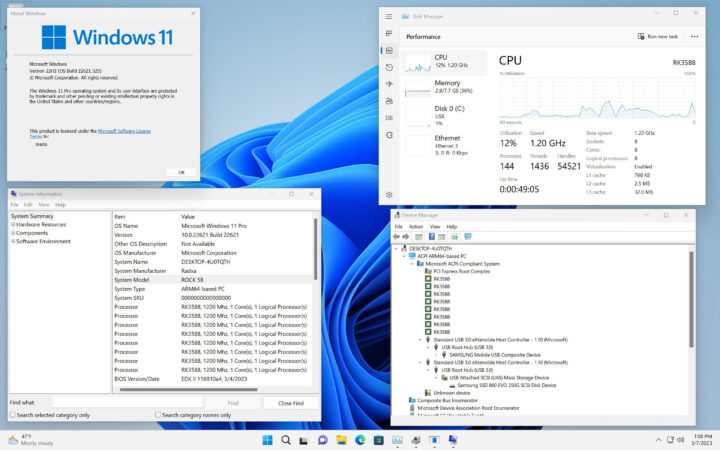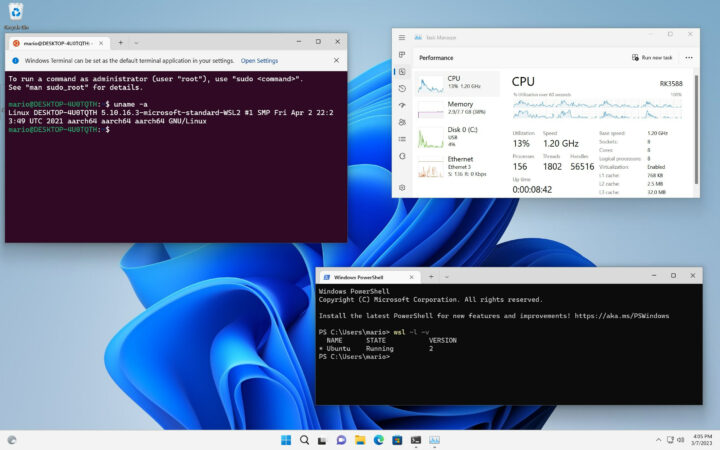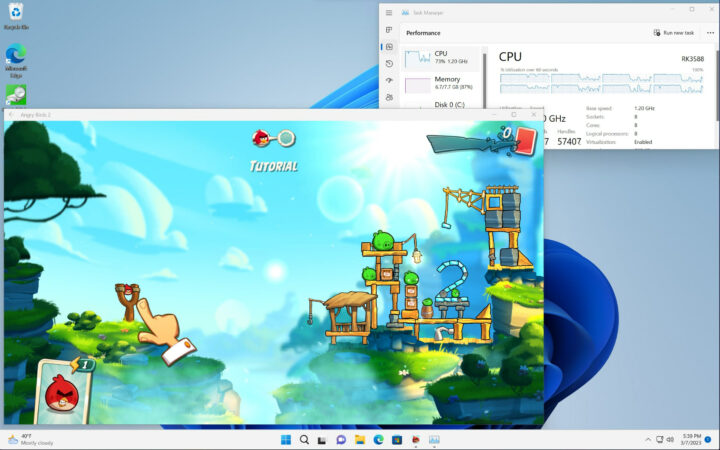Most people will probably want to run Linux on their Arm SBC, but Windows 11 could also be an option with the Rock 5B and other single board computers based on Rockchip RK3588 and other powerful Arm SoCs thanks to the Windows on Raspberry project.
The project, also known as “Windows on R” is maintained by Mario Blnic who recently tweeted a screenshot showing Windows 11 running on the Radxa ROCK 5B SBC powered by a Rockchip RK3588 Arm Cortex-A76A/A55 clocked at 1.2 GHz (instead of the usual 2.2/2.4 GHz), but with USB 2.0/3.0 and display interface apparently working just fine. PCIe appears to be detected, but not working.
He also noted that virtualization worked out of the box unlike with Raspberry Pi 4 SBC showing Windows Subsystem for Linux (WSL 2) and PowerShell in the screenshot below.
Virtualization also enabled running Android apps in Windows 11 Arm as shown in the screenshot below with Angry Birds.
I’d assume there aren’t any drivers for the GPU and VPU however, so it might be sluggish, but no video demo was shared. Geekbench 5 could run fine, but since the processor is clocked at 1.2 GHz the scores are lower than in Linux or Android.
The code is still working in progress, and Mario told people to check the project website and the GitHub repository for updates, but I was unable to find anything about Rockchip on either at this time. A thread on Radxa’s forum points to an EDK2 UEFI port for RK35xx targets which was apparently used to boot Windows 11 on the Rock 5B.

Jean-Luc started CNX Software in 2010 as a part-time endeavor, before quitting his job as a software engineering manager, and starting to write daily news, and reviews full time later in 2011.
Support CNX Software! Donate via cryptocurrencies, become a Patron on Patreon, or purchase goods on Amazon or Aliexpress







